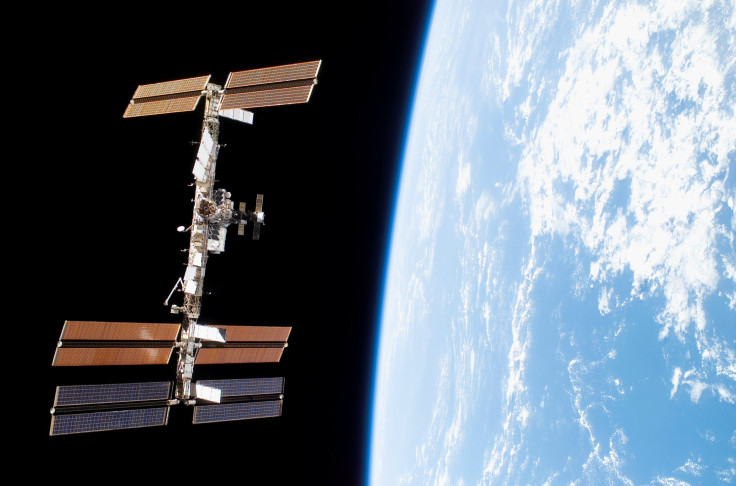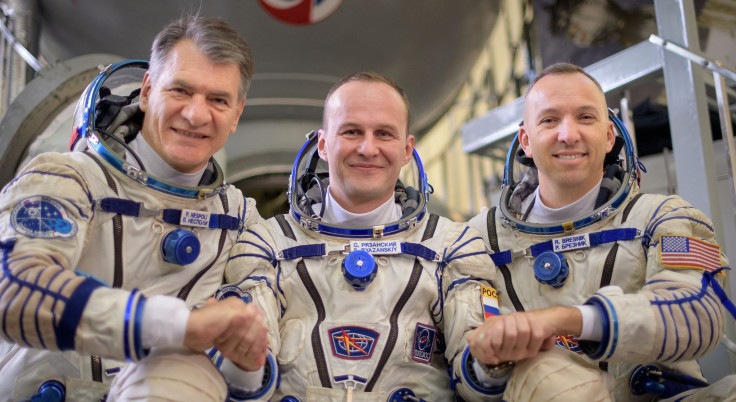How High Is The International Space Station, How Far From Earth?

Three astronauts launched to the International Space Station on Friday at 11:41 a.m. EST. By the time most people on the East Coast of the United States are going to sleep Friday, those three astronauts will have moved into the ISS, their new home until December. Docking is scheduled for about 6 p.m. EST, launch to docking should take a little more than six hours, or about the same amount of time it takes to fly nonstop from New York to Los Angeles.
The Soyuz rocket launched from the Baikonur Cosmodrome in southern Kazakhstan at 9:41 p.m. of their local time. Less than half an hour after launch NASA tweeted a video of third stage separation of the rocket and said that the astronauts had entered Earth’s orbit about 125 miles above the surface of the planet. The ISS sits a little more than 200 miles above the Earth.
Read: How To Spot The International Space Station: When Will It Fly Over?

The station orbits Earth at a speed of more than 17,000 miles an hour and completes one full orbit around Earth just about every 90 minutes or so. In order for the craft carrying the astronauts to the ISS to be able to dock on the station, it has to spend time in orbit gathering speed so that it is traveling about the same speed as the ISS, Stephanie Schierholz, NASA press secretary, told International Business Times.
To do this, the crew will orbit Earth a total of four times, each orbit lasting 90 minutes.
To position the craft properly for travel to the ISS, the engines on the Soyuz will fire four times. Each burn lasts between 15 and 45 seconds to change the velocity of the Soyuz ever so slightly to move it into position.
Roughly four hours into the trip the automated rendezvous between the craft and the station will start. At this time the craft will still be almost 300 miles away from the ISS, said Schierholz. The craft will be docking at the Earth-facing port of the Iss called Rassvet and during the automated approach a series of burns will occur to perfectly position for this port. The automated rendezvous system on board the communicates with the antennas on the ISS to bring the craft in for a smooth docking. At any time the process can be taken over by the Soyuz commander who can manually dock the craft at the station.

Read: Take A Tour Of The International Space Station With Google Earth Street View
Docking coverage begins at 5:15 p.m. EST on NASA’s website and on the agency’s YouTube channels. Docking is scheduled for about 45 minutes later and then around 7 p.m. coverage of the hatch opening will begin for the opening scheduled for 7:40 p.m.
You can watch all the live coverage here:
© Copyright IBTimes 2024. All rights reserved.





















